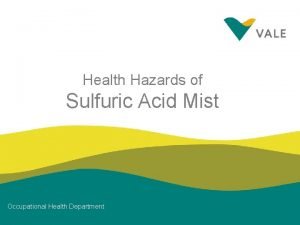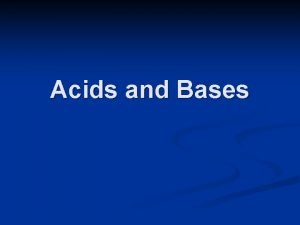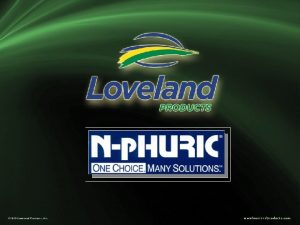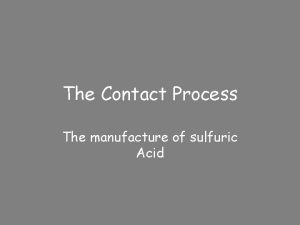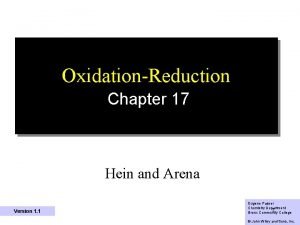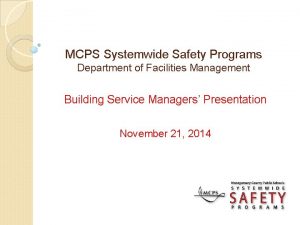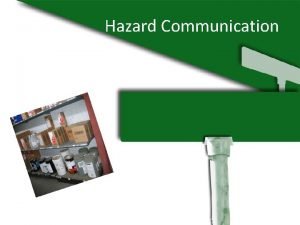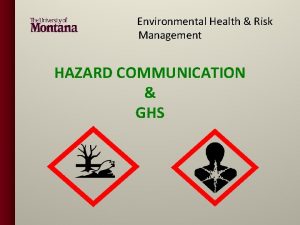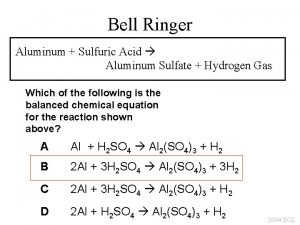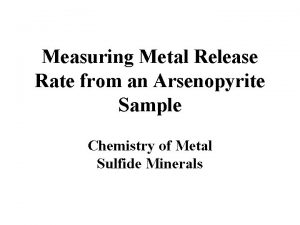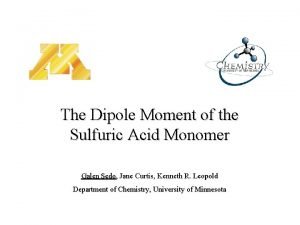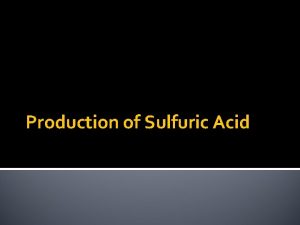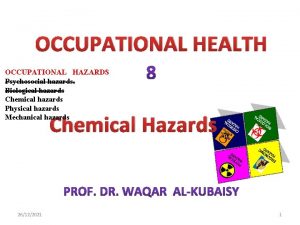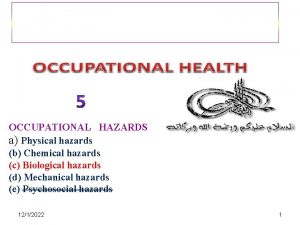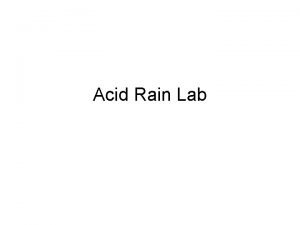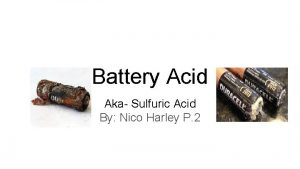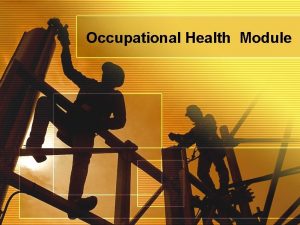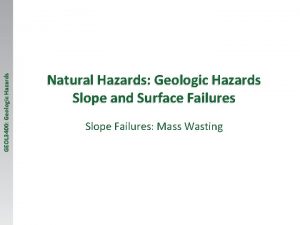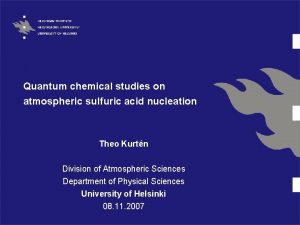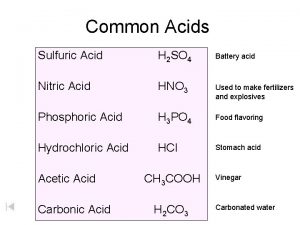Health Hazards of Sulfuric Acid Mist Occupational Health















- Slides: 15

Health Hazards of Sulfuric Acid Mist Occupational Health Department

Identify the Hazard- Why Sulfuric Acid Mist? At VALE Sudbury, we produce Sulfuric Acid as a by-product in our Smelter. We also use sulfuric acid in our electrowinning process, in the EW tankhouse. 2

Identify the Hazard • Sulfuric acid mist has an Occupational Exposure Limit of 0. 2 mg/m 3 (T) Notation means thoracic particle size fraction, those particles that target the thoracic region of the respiratory tract (up to 25 microns in size) • Sulfuric acid mist generally less than 10 microns • ACGIH category A 2: Suspected Human Carcinogen 3

Identify the Hazard Chemical and Physical Properties of Sulfuric acid Colourless, odourless, dense, oily, liquid 4 Melting point 10. 3 °C Boiling point 338 °C Solubility in water miscible Molecular Weight 98. 1 Corrosive Yes Flammable No

Identify the Hazard – Sulfuric Acid Mist • Exists as particle, specifically a mist, defined as suspended liquid droplets • Formed by condensation or breaking up liquid such as splashing, foaming, atomizing • The vapour pressure of the acid is negligible, therefore the vapour phase is not a concern 5

Assess the Risk Potential health effects are: • Eyes, skin, nose, throat irritation • Adverse effects on pulmonary function • Dental erosion • Dermatitis Remember that health effects are exposure (time and concentration) dependent. Maintaining exposures below the Occupational Exposure Limits is believed to reduce and possibly eliminate health effects. 6

Assess the Risk Ontario’s Occupational Exposure Limit (OEL) Time-Weighted Average (TWA) concentration for a normal 8 -hour workday and 40 -hour workweek, to which it is believed that nearly all workers may be repeatedly exposed, day after day, without adverse effects. Sulfuric acid mist 7 Ø 0. 200 mg/m 3 for 8 hr shift Ø 0. 160 mg/m 3 for 10 hr shift Ø 0. 133 mg/m 3 for 12 hr shift

Assess the Risks Air Monitoring: Sulfuric Acid mist from thoracic component of airborne particulate sampled. Particle size less then 25 microns. The sampling train consists of a 37 mm MCE filter in a cassette equipped with a GK 2. 69 thoracic cyclone, and a pump 8

Assess The Risk AREA SAMPLING: Placing the sampling equipment in a representative fixed position in the work area. Useful as an index of general contamination. Can be used to determine whether to post as a “Respirator Protection Required” area. 9

Assess the Risks Personal Monitoring is conducted: In the worker’s breathing zone. Doing his/her normal work activities. Over an entire work shift or representative portion. *Results determine worker exposure (for comparison to OELs) 10

Controls Types of Controls: Engineering Controls: Substitution, Ventilation, Enclosure/isolation Administrative Controls: Training, Scheduling, OH Programs, SPIs Work and Hygiene Practices: Housekeeping, Washing, Vacuuming PPE: Adequate for risk, Training, Fitting 11

Controls PPE: Respirator Selection Acid mist exists as a mist (i. e. liquid particle). Select filter or combination filter / cartridge. Half-face respirators have an APF (assigned protection factor) of 10. They will afford protection up to 10 times the Occupational Exposure Limit. 10 X 0. 20 mg/m 3 = 2. 0 mg/m 3 Loose fitting PAPR (Powered Air Purifying Respirators) have a protection factor of 25. They will afford protection up to 25 times the Occupational Exposure Limit. 25 X 0. 20 mg/m 3 = 5. 0 mg/m 3 Full-face respirators have an APF of 50. They will afford protection up to 50 times the Occupational Exposure Limit. 50 X 0. 20 mg/m 3 = 10. 0 mg/m 3 12

Take home message Emphasis is on what you can do; how you go out in the plant and recognize and understand a hazard and assess the level of risk. Planning for controls is done ahead of time. If no control is in place or you think the hazard still exists, talk to your supervisor. Following established controls and continually monitor and assess controls; if no control is in place or you think the hazard still exists, talk to your supervisor. 13

Thank you! 14

15
 Sulphuric acid mist
Sulphuric acid mist What is h3o+ acid or base
What is h3o+ acid or base Urea reaction with h2so4
Urea reaction with h2so4 Contact process
Contact process H2so4 redox reaction
H2so4 redox reaction Sulfuric acid sds
Sulfuric acid sds Physical hazards
Physical hazards Sulfuric acid sds
Sulfuric acid sds Dizolvarea acidului sulfuric in apa
Dizolvarea acidului sulfuric in apa Hydrochloric acid electrolysis
Hydrochloric acid electrolysis Aluminium and sulfuric acid
Aluminium and sulfuric acid Copper carbonate and hydrochloric acid
Copper carbonate and hydrochloric acid S22fe
S22fe Dipole moment of h2so4
Dipole moment of h2so4 Do water contracts gets smaller when it freezes
Do water contracts gets smaller when it freezes Sulfuric acid empirical formula
Sulfuric acid empirical formula
